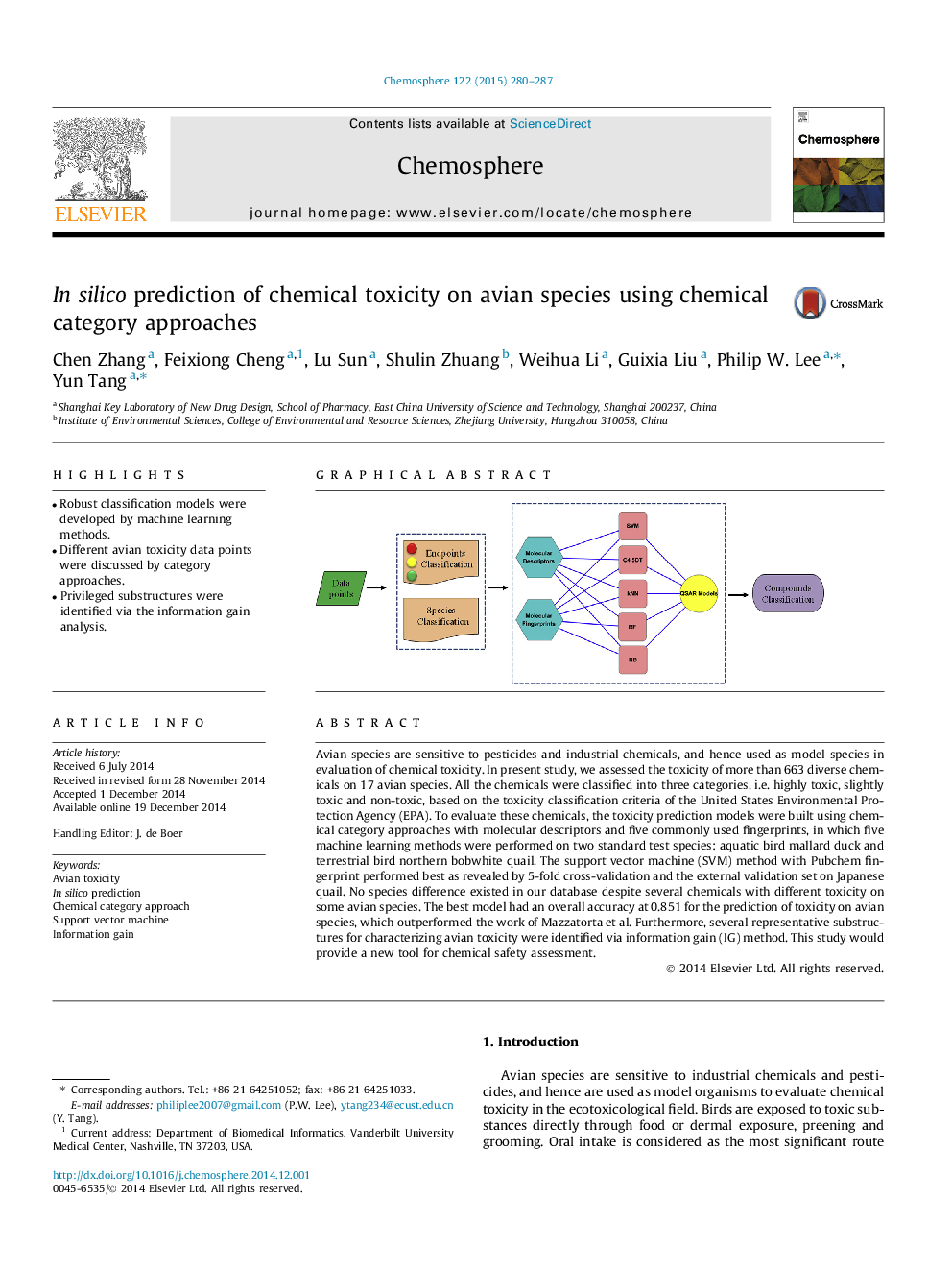| کد مقاله | کد نشریه | سال انتشار | مقاله انگلیسی | نسخه تمام متن |
|---|---|---|---|---|
| 4408404 | 1618849 | 2015 | 8 صفحه PDF | دانلود رایگان |
• Robust classification models were developed by machine learning methods.
• Different avian toxicity data points were discussed by category approaches.
• Privileged substructures were identified via the information gain analysis.
Avian species are sensitive to pesticides and industrial chemicals, and hence used as model species in evaluation of chemical toxicity. In present study, we assessed the toxicity of more than 663 diverse chemicals on 17 avian species. All the chemicals were classified into three categories, i.e. highly toxic, slightly toxic and non-toxic, based on the toxicity classification criteria of the United States Environmental Protection Agency (EPA). To evaluate these chemicals, the toxicity prediction models were built using chemical category approaches with molecular descriptors and five commonly used fingerprints, in which five machine learning methods were performed on two standard test species: aquatic bird mallard duck and terrestrial bird northern bobwhite quail. The support vector machine (SVM) method with Pubchem fingerprint performed best as revealed by 5-fold cross-validation and the external validation set on Japanese quail. No species difference existed in our database despite several chemicals with different toxicity on some avian species. The best model had an overall accuracy at 0.851 for the prediction of toxicity on avian species, which outperformed the work of Mazzatorta et al. Furthermore, several representative substructures for characterizing avian toxicity were identified via information gain (IG) method. This study would provide a new tool for chemical safety assessment.
Figure optionsDownload as PowerPoint slide
Journal: Chemosphere - Volume 122, March 2015, Pages 280–287
